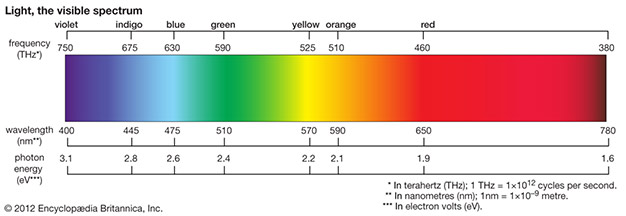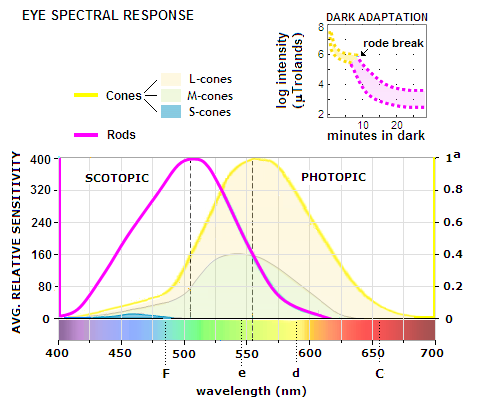The Geometric Origin of Selective Color Perception
What every child can see...

but no physicist can measure...

geometry can predict:
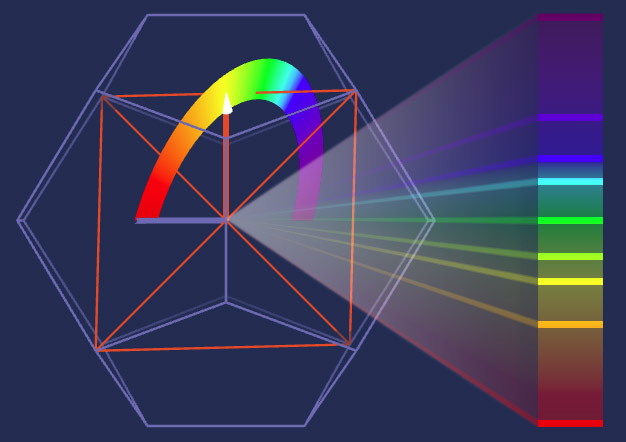
The Platonic Solids...
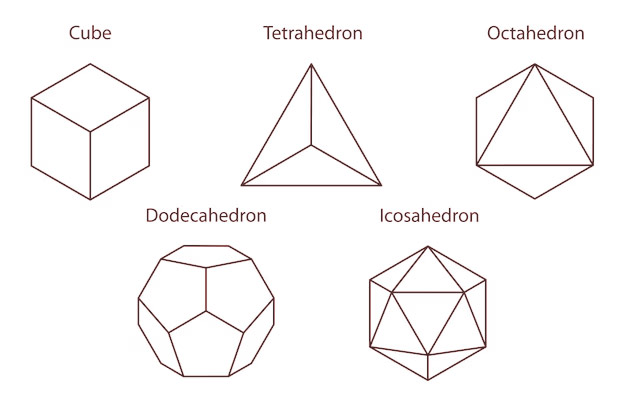
To understand the functions of the Platonic Solids, let's establish a basic framework. The Cube and Octahedron are duals, as are the Icosahedron and Dodecahedron. The Tetrahedron is self-dual and connects the two pairs. The Cube-Octa represents external, Euclidean space, where the Electromagnetic (or "gauge") field resides. The Icosa-Dodeca, on the other hand, symbolizes the hidden or "action" realm, often associated with the scalar field. This way, both the electromagnetic and scalar fields exhibit specific symmetries. It is believed that the interaction between these fields ("symmetry breaking") not only gives mass to particles (the Higgs mechanism) but also plays a role in conscious perception.
This leads to the possibility of a symmetry key that links measurable wavelengths to light perception—specifically, color. If this relation were continuous, it wouldn't be verifiable or falsifiable. But it's not! It turns out, and intuitively makes sense, that when local and nonlocal symmetries align, they can enhance perception. Remarkably, the geometric alignments of the Cube-Octa and Icosa-Dodeca duals precisely predict the primary colors, demonstrating "The Geometric Origin of Color."
As a bonus—and a powerful confirmation of this theory—the same geometric alignment also pinpoints the Retinal Peak Sensitivity (or Photopic Peak).
In the interactive demo, the Icosa-Dodeca dual is simplified to just the Dodecahedron, while the Cube-Octa is represented by the Tetrahedron, allowing clearer observation of the distinct interdigitations. The rotations have no intrinsic meaning but help you explore these interconnections. With the primary colors correctly mapped as one octave across the 180° span, the higher octave of "red," just beyond the visible spectrum, is labeled "ultra-red."
The primary colors can now be plotted directly as a function of the cardinal angle between the Icosa-Dodeca and Cube-Octa:
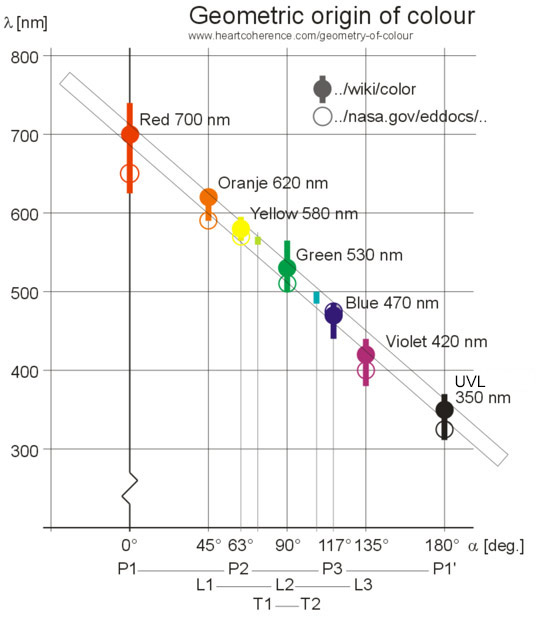
Here are literature references to the positions of the primary colors and the Retinal Peak Sensitivity in the spectrum:
